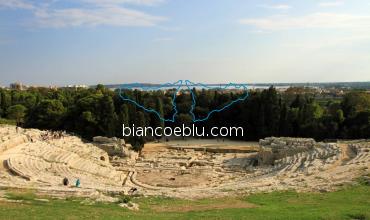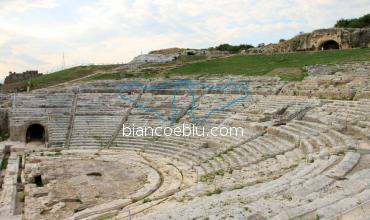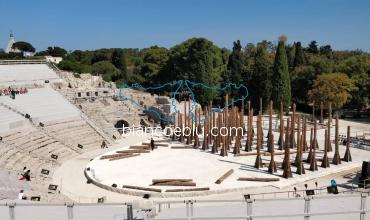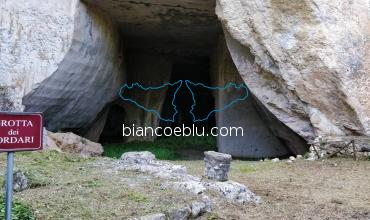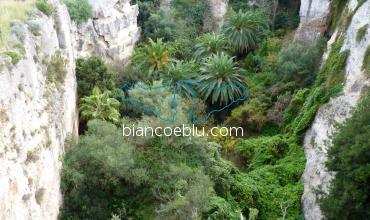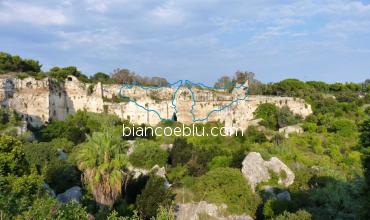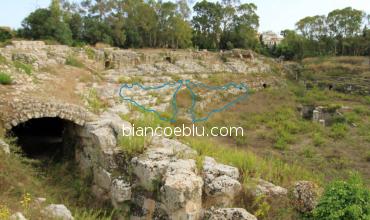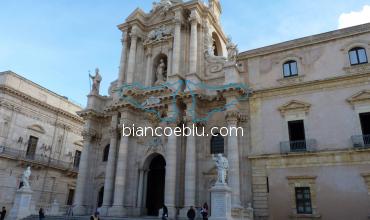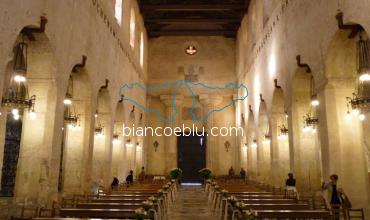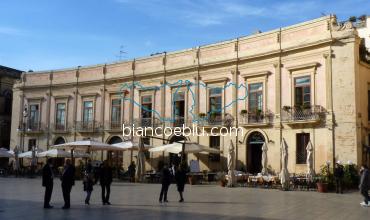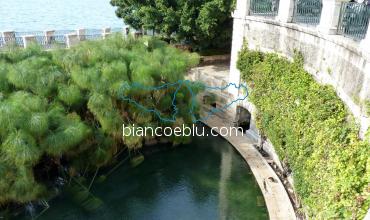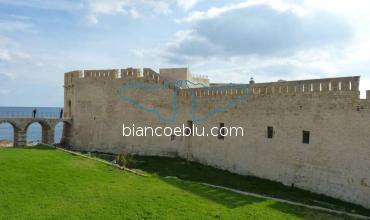Art, culture, beauty, and inspiration still today are the motos of the city situated on the south-eastern coast of Sicily, awarded a UNESCO World Heritage Site. This city is also part of the myth, even its symbol is the nymph Arethusa who lived on the island of Ortigia, the oldest part of Syracuse.
- Information
- Map of Siracuse
- Where to stay
- How to get there
- Beaches
- What to see
- Things to do
- Where to eat
Information
Short History of Syrcause.
The origin of the name seems to derive from the Sicilian terms Syrako or Syraka which translated means "plenty of water". This city shone with its glory and light both in the classical and Roman ages. For centuries it was the capital of Sicily until the Arabs invasion in 878 AD.
Rival of the Carthaginians started in the city was also the beginning of the Punic wars, its position in the Mediterranean and its port were a reason for clashes that arose from commercial as well as political interests.
In Sicily Ancient Greece was synonymous with Syracuse, the city lived through tyranny during the Greek age interrupted by moments of oligarchy. But mostly Athens always tried to subdue Syrakousai as it feared the expansionist power of the Sicilian city.
The most important names of the Greek world were welcomed to the court of the city, among these we remember: Aeschylus, Pindar, Xenophon, Plato, and Archimedes. The latter was born in an Ancient Greece city and left it in 221 BC. during the Roman siege. Archimedes was killed during the assault of the city and all the wealth accumulated over the centuries by Syracusans people was plundered by the Romans. During this hegemony, the name of the city became Syracuse, the capital of Roman Sicily with the foundation of its province.
In Christian times, thanks to the port, the city was a goal for the missionaries who passed through and for the Christians who hid. Therefore, the catacombs built in that period are of considerable importance, second only to the Roman ones. Syracuse was also the capital for 5 years of the Eastern Roman Empire after the fall of the Western Roman Empire.
After the Roman domination, the Arabs and then the Normans arrived. Under the Nordic rule, the first County of Sicily was born, led by Count Giordano d'Altavilla. During the Spanish domination that was also the Renaissance period Syracuse was called Zaragoza de Sicilia and assumed the name of fortress, being a crucial point between the eastern and western part of the Mediterranean, given that the Spaniards wanted to keep their borders firm. The city was destroyed by the earthquake of 1693 and rebuilt in Baroque style.
Syracuse today
The service sector also linked to tourism, always growing, is the one that benefits most from the presence of tourists. The strategic position of the city, very close to the Fontanarossa airport and well-served by the road and railway network, makes easier the presence of visitors.
Map of Siracuse
WHERE TO STAY
Surely there will be many offers of staying in Syracuse however we invite you to Marina di Ragusa where we will be happy to welcome you, with our best options. Bianco e Blu is the reference site for the rental of beautiful rooms in Bed and Breakfasts and holiday houses.
All our accommodations are situated near the center of Marina di Ragusa near supermarkets, restaurants, and a stone's throw from the sea which, with its very fine and clean beach, is the pride of the Province of Ragusa. Check all our offers HERE
HOW TO GET TO SYRACUSE
Airports of Sicily
Airports in Eastern Sicily
Bus
The bus companies that connect Syracuse with the other cities of Sicily are AST and INTERBUS. We advise you to look at their websites to check the timetables of the sections concerned.
- INTERBUS and AST which make various trips during the day: www.aziendasiciliacanasporti.it and www.interbus.it
- Bus from Catania to Syracuse: The route is served by the INTERBUS and AST companies, and travel time is approximately 1:30.
- Bus from Palermo to Syracuse: with the INTERBUS company you can take the direct Palermo-Syracuse line. The travel time is approximately 3:20 hours.
- Bus from Ragusa to Syracuse: the route is served by the AST company with various trips during the day. The travel time is approximately 2:45 hours.
- Bus from Modica to Syracuse: with AST the travel time is about 2:20 hours.
- Bus from Noto to Syracuse: both bus companies operate routes to Syracuse, the estimated travel time is 55 minutes.
Trains
- From Catania central station there are various railway connections with the city of Syracuse, the fastest train takes 1:15 h to get there.
- From Fontanarossa airport (CT) travel time expected is about 1:10h.
- From Palermo Central Station the train takes about 4:30h.
- From Ragusa to Syracuse the train takes about 2:00h.
- From Comiso to Syracuse the journey time by train is about 2:45 h.
- From Modica to Syracuse the train takes about 1:45 h.
- From Noto to Syracuse the train takes about 0:35 h.
Car
- From Catania to Syracuse the road is about 70 km, which can be covered in 0:54 hours.
- From Palermo to Syracuse the road is approximately 259 km and 03:00.
- From Trapani to Syracuse the road is about 360 km and 04:10 am.
- From Ragusa to Syracuse the road is partly on the highway and there are about 100 km and 1:20 h.
- From Syracuse is possible to get the highway to Modica, direction Gela.
BEACHES IN SYRACUSE
Fontane Bianche beach
Locality located about 24 km south of Syracuse, the coastal shore of Fontane Bianche is about 1200 meters long. The beach is free but also served by bathing facilities. The beach consists of fine white sand set between two rocky promontories that create an oasis with always calm waters and shallow waters. Therefore, a perfect place for family vacations.
Lidos in Fontane Bianche
- Lido Fontane Bianche via Mazzarò- tel 0931 790900
- Kakua Beach viale dei Lidi, 525 tel 370 147 0859
- Lido Sayonara viale dei Lidi 523 tel 0931 790345
- Pianeta del Barabba viale dei Lidi, 525 tel 3487839313
It is a place full of charm situated 15 km south of the city of Aretusea. The marine territory of Ognina impresses with the beauty of its cliffs, blue sea, and seabed which are appreciated by fishermen and snorkeling fans.. near the beach, there is an islet that can be reached by swimming. A perfect place to spend a day at the beach if you love tranquility, there is also a small port where you can find fresh fish every day.
Lidos in Ognina
Almost a kilometer long, this beach, going up the coast towards the city, is full of wild charm. Between sand, rocks, and natural caves you are to discover a place that still preserves the beauty of untouched nature. There are no bathing facilities.
Beach of Arenella
It is Both a public and private beach with attached parking, showers are also present on the free part of it. The beach is made up of very fine sand, and the sea with crystalline waters is always calm, due to the promontories that protect it from the sides. It is advisable to climb the rocks with the appropriate shoes, there are various places where you can dive..
Lidos in Arenella
The Plemmirio Marine Park is a territory that covers over 14 km of the coast. There are numerous beaches, many of which are wild and uncontaminated, full of rocks and cliffs, and others with very fine sand and spectacularly colored waters.
You can visit The park while trekking or by bike, and there are also organized boat trips, diving, and fishing. Each access to the Plemmirio Marine Park has its number and the zones are marked as A, B, C, in each of them are applied specific environmental protection regimes..
Beach of Punta Milocca and Beach of Fanusa - Parco Marino del Plemmirio – Natural Reserve
There are numerous accesses to the beach within the Plemmirio natural reserve. Each one of them is marked by a number. The flora and the beach contribute to making this part of the unspoiled Sicilian coast unique. Even with the rocks and ravines, Fanusa Beach is also accessible to children, the accesses are the nn. 1-2-3-4. To get there it is recommended to wear trekking shoes and sportswear. At Punta Milocca there is a watchtower built in 1467 which, hit by the earthquake in the Val di Noto, was rebuilt in 1697.
Lidos of Fanusa
Lido Fly Beach Via Cristoforo Colombo 22 tel 338 599 9924
Beach of Massolivieri - Parco marino del Plemmirio – Natural Reserve
This beach is situated just below the Punta della Mola and makes part of the Plemmirio marine park. Its sand is the color of gold and the characteristic that catches the eye is the white color of the cliffs above it. Over time, from the classical to the modern era, this site has been the site of limestone extraction for the decorations of the temples and also of the churches of Syracuse. The beach is not equipped.
Punta Castelluccio and Minareto Beach - Plemmirio marine park - Natural reserve
From access 35 of zone C of the protected area you can access the Minareto beach considered one of the most beautiful in Eastern Sicily. It must be said that it is not a very large beach and that a part is private. It is a natural cove near the lighthouse of Punta Castelluccio. The sea in this part is clear and with calm waters, as it is protected by the rocks of the natural inlet. There is a spacious parking slot near the beach, but there are no equipped lidos.
Beach of Cala Zaffiro - Parco marino del Plemmirio – Natural Reserve
Another natural cave in the large area of Plemmirio is near access 27. Its name derives from the color of its seabed which recalls the blue of the precious stones. An enchanting place, with small cliffs, promontories, rocks, and a sea right for diving and snorkeling fans. In the depths of Cala Zaffiro you can admire different species from starfish and seahorses to tuna, often a bit away from the seashores you can also see dolphins, whales, and sharks. Also in the depths of the sea there is the statue of the siren dedicated to Rossana Maiorca, a well-known Italian diver. The sea is accessed from the rocks that create natural pools and from which you can dive.
Lido in Cala Zaffiro
This beach is about 9 km away from Syracuse, and this part of the shore is also served by the city bus n. 23 which stops 10 minutes from the sea. The color of the sea leaves breathless with all its shades of blue, the beach is made up of golden sand and rocks. The depths are typical of the Mediterranean which gradually becomes deeper, therefore also suitable for children. There are no facilities on the beach.
Beach of Punta del Pero
Situated just right south of the port of Ortigia from which you can enjoy the panorama, it is considered an earthly paradise. Access to the beach is protected from the road thanks to natural caves, the beach is accessible by a driveway and stairs. The waters of Punta del Pero are shallow and the sand is white. Given the position it is not possible to use mechanical cleaning devices therefore those who want to attend must have the utmost respect for the environment and for those who clean it manually. Only a part of the beach is free, but there is a kiosk. Right by the side of the beach, there are many restaurants and free parking.
Beach of Fonte Aretusa Ortigia
It is a very small beach near the port of Ortigia, handy for those who are in town for a few hours and feel like taking a dip. There is also a bar near the beach.
Beach of Cala Rossa Ortigia
The beach is frequented by the locals of Ortigia and by tourists, it is located near the Maniaci castle and is accessible via an iron staircase. The beach is made up of sand and pebbles. There are showers on the beach.
Beach of Marina di Ortigia
One more tiny beach, often crowded, it is just a few meters away from the Aretusa origin, the proximity to the port does not guarantee clear waters.
The public beach of Syracuse - via Cimone 16
This beach is accessible by stairs and it is for lovers of cliffs and diving. The waters are clear, and the rocks are white and capture the light, thus making it the right place for sunbathers who don't like sand.
Other beaches of particular interest are South of Syracuse, passing by the natural Reserve of Plemirio (mentioned before) :
- Avola
- Oasi Gelsomineto
- Lido di Noto
- Asinaro o Calabernardo
- Pizzuta
- Vendicari (Beach in Riserva di Vendicari)
- Calamosche (Beach in Riserva di Vendicari)
- Eloro (Beach in Riserva di Vendicari)
- Marianelli (Beach in Riserva di Vendicari)
- San Lorenzo
- Marzamemi
- Portopalo di Capo Passero
- Santa Maria del Focallo
- Isola delle Correnti
- Playa Carratois
what to see in Syracuse
To start, before any palace or church, the island of Ortigia must be visited, and knowing its history can only make its magic even more splendid. The island is joined to Syracuse by a bridge.
Entering the island’s narrow streets full of history, one will remember that the myth tells of the nymph Arethusa who, to escape the god Alpheus, son of the god and titan Oceanus, asked for help from the goddess Artemis who transformed her into a source of water in Syrakousai. Alpheus from his side was desperate and Zeus, moved by this love, transformed him into a river to reunite him with his beloved across the Ionian Sea. According to an anthropological reading, this story serves to underline the link between the Peloponnese where the Alpheus River flows, and Syracuse.
The historical and religious buildings of greatest value are situated in this part of the city which is its beating heart. In the Arethusa fountain, you can also admire the magnificent plants “papyri of Syracuse”.
On the island of Ortigia you can visit:
This building is interesting to see because its importance goes beyond the religious value itself. The basement of this church was made on the magnificent temple of Athena. In fact, in addition to the richly decorated Baroque-style façade, inside the Duomo, you can admire the Doric columns of the temple dating back to the 8th century BC. But, from excavations made at the beginning of the last century, it was possible to prove that a temple already stood in that place in the sixth century BC.
In front of this magnificent structure, one can only stand in silent admiration, because time and history speak for it.
Chiesa of Santa Lucia alla Badia
To Complete the beauty of the building dating back to 1703, inside the church, dedicated to the saint patron of Syracuse, it is possible to admire a painting of Caravaggio "The Burial of Saint Lucia".
Mikveh
In the city of Syracuse the historical treasures belong to different traditions and cultures, one of these is the Mikveh. For Jews, it is the place to take a purifying bath before entering the temple. The one in the city of Arethusa is considered the largest and oldest Jewish ritual bath in Europe.
Maniace Castello
It was built on the ruins of a pre-existing fortress and designed by Frederick II of Svevia in the first half of the thirteenth century, the castle was built by Giorgio Maniace whose name Frederick gave to a castle. A beautiful example of the Gothic style, the castle, in the Middle Ages, was a place assigned both to military defense and to welcome social moments of the court of the king of Sicily.
Seat of the municipality of Syracuse
The Baroque building hosting the Syracuse town hall is the Palazzo del Vermexio. The white of its stone combined with the Baroque style makes this building one of the best representations of the seventeenth-century style.
Palazzo Beneventano del Bosco
In Syracuse, the Baroque is also expressed through the Rococo style of the 18th century with this building considered the city’s most beautiful. It is located in the Piazza del Duomo in Ortigia. It is for sure a place to visit and admire both the external architecture and the internal decorations.
Tempio of Apollo
Built in Doric style, it is one of Syracuse’s oldest temples, dating back to the sixth century BC. A place full of charm for the history carved on its centuries-old stones. It is located in Ortigia in Piazza Pancalli near the market. The area is fenced off and visible but free access to the site is not possible.
Other churches and buildings of historical and cultural value:
- Chiesa di San Martino
- Chiesa di Santa Lucia al Sepolcro
- Chiesa di San Giovannello
- Chiesa dell’Immacolata
- Santuario della Madonna delle Lacrime
- Palazzo Impellizzeri
- Palazzo Montalto
- Palazzo Gargallo
In Syracuse, outside the island of Ortigia, you can visit:
This is a church built in the first centuries A.C. in Norman-Gothic style, it retains a particular charm. It was built on the remains of other Hellenic and Roman structures, although the earthquake that struck Eastern Sicily in 1693 destroyed it in part. Legend tells that under the church there is the crypt containing the sarcophagus of San Marciano proto bishop of Syracuse, the first bishop of the West, and the student of San Paolo. The place is considered a place of worship by both Christians and Orthodox.
Archaeological Park of Neapolis
It is the natural area that includes the archaeological sites of the Syracuse area. These are considered the most important in Sicily and the largest in the Mediterranean. In this vast area of 240,000 m² there are the treasures of the past:
- Teatro greco
- Anfiteatro romano
- Tombe della via dei sepolcri
- Foro siracusano
- Orecchio di Dionisio
- La grotta del ninfeo
- Tomba di Archimede
Museums of Syracuse
- Art and culture make one in Syracuse, and its museums are among the most important Sicilian museums:
- Museo Archeologico Regionale “Paolo Orsi”: is considered to be one of the most important Europe archaeological museums, Viale Teocrito 66. Tel. 0931-489511
- Museo del Papiro: the place where the Syracuse papyri is kept and protected, via Nizza 14. Tel. 0931-22100
- Museo Bellomo: keeps medieval and modern objects of Siracusa history, via Capodieci 14. Tel. 0931-69511
- Museo Aretuseo dei Pupi: a remarkable and important exhibition of the art of Sicilian puppeteers recognized as a part of the heritage of humanity by UNESCO. Piazza S. Giuseppe 32. Tel. 0931-586360
- Museo del Cinema via Giovanni Battista Alagona 41. Tel. 0931-65024
- Tecnoparco di Archimede Viale Giuseppe Agnello 26. Tel. 3474826670
Natural Reserves near Syracuse
It is situated in the Anapo Valley which is crossed by one of the largest rivers in Sicily. The reserve has a territory of 3,712 hectares. The peculiar characteristics of Pantalica are the canyons and the largest necropolis in the Mediterranean. The rocky walls contain tombs that date back to prehistoric times and were used until the early Christian period.
In 2005 UNESCO recognized the necropolis of Pantalica as a heritage of humanity, therefore to be preserved. The ecosystem of the reserve is various and rich in plant, animal, and mineral species. There are wild orchids, woods of poplars, oaks, and plane trees. Just as there are also varieties of eagles, kingfishers, foxes, etc. The waters of the Anapo River are also full of freshwater fish, including trout. In the reserve it is possible to hike or bike. There are numerous equipped areas along the paths.
.
Natural Reserve Orientata Oasi faunistica di Vendicari
In the province of Syracuse, there is also the Vendicari Natural Reserve. The Reserve, located in the area between Noto and Pachino, is about 43 km away from the city, a journey that can be covered in less than an hour by car. Entrusted to the Sicilian State Forestry, the Vendicari reserve is a place full of surprises for nature lovers.
Birdwatchers, in addition to the various species of birds such as black storks, herons, mute swans, etc., will also be able to admire the pink flamingos that are at home in Vendicari as well as the Caretta-Caretta sea turtles that nest on its beaches. In the pristine landscape of the Reserve, there are also archaeological remains from the Greek and Byzantine ages, while from the Middle Ages is the Svevian Tower, a fortification dating back to the 14th century that can still be visited, as well as the Tonnara, present since the 1700s.
The beaches in Vendicari are four and all of them have big parking lots:
There is always a bit of walk to do to reach the beaches from the parking lot, but the crystal clear waters where to dive are worth it; during this walking tour you will immerse yourself in the typical scents of the Mediterranean scrub thanks to the plant species present such as wild thyme, myrtle, etc.
There are 3 itineraries to discover Vendicari:
- North: from Eloro Beach to Calamosche beach
- Centre-North: from the entrance to the Reserve to the Calamosche beach
- Centre-South: entrance from the “Cittadella dei Maccari” to the Tonnara
This reserve includes three municipalities in the Syracuse area: Noto, Avola and Syracuse. The territory of the reserve extends over about 2,760 hectares and for about 10 km it is bathed by the Cassibile River, one of the largest rivers in Eastern Sicily.
The presence of the river over the centuries has eroded the rocky walls of the Ibleo plateau, which affects the provinces of Syracuse and Ragusa, creating spectacular canyons, up to 250 meters deep in some points. Furthermore, archaeological remains, necropolises, and caves make the Reserve an important testimony to the archaic past of the territory.
The vegetation is typical of the Mediterranean maquis, that frames the lakes of Avola, the undisputed destination for swimming in natural pools set in a canyon which, with its waterfalls, are a must-see in the Cavagrande del Cassibile Nature Reserve.
The protected marine area of Plemmirio
Just 10 km south of the border of Syracuse province is this magnificent from many aspects place. An area to visit with excursions by bike or on foot, organized boat tours, diving, fishing, and bathing. It is a protected area and, being a marine park, it is not possible to do all the activities listed throughout the territory. The Park extends over approximately 14 km and has 35 entrances, each area, marked with letters A, B, and C, has different environmental protection regimes.
In zone A is the peninsula of La Maddalena, with the lighthouse of Capo Murro di Porco situated on its extreme southern tip. This place is worth visiting. The trail is spectacular due to the structure of the territory full of cliffs, yet it must be organized attentively, therefore not recommended for children. The sandy beaches suitable for families are Fanusa Beach and Punta Castelluccio Beach access numbers 34-35.
For information on the areas, the accesses, and the activities allowed in them, consult the website: www.plemmirio.eu
The places not to be missed within the protected area of Plemmirio are:
- Arco di Geronimo
- Scoglio dell’elefante
- Punta Tavernara
- Punta del Gigante
- Punta Tavola
- Grotta della Pillirina
- Rive Bianche
- Tonnara e Baia di Terrauzza
- Punta della Mola
This river flows into the large port of Ortigia, its most important feature is the presence of papyri, which are present in only two places in the world: the banks of the Ciane in Syracuse and the banks of the Nile in Egypt.
The Ciane is a continuous river, in some places it has seen the work of man in others it is still in its natural state, along its route it also encounters various swampy areas. There are many possibilities for excursions in this corner of paradise: on foot, by bike, by boat, and canoe.
.
Other less frequented Natural Reserves:
From Syracuse, it is possible to take the highway towards Gela, which stops at Ispica, or it is possible to take the highway up to Messina, passing through Catania and Taormina.
In less than 1 hour from Syracuse:
- Catania
- Noto
- Palazzolo Acreide
- Marzamemi e Portopalo di Capo Passero
- Ispica
- Scicli
- Modica
- Ragusa Ibla
- Marina di Ragusa
THINGS TO DO IN SYRACUSE
In the historic center and on the seafront of Ortigia, you can enjoy an aperitif outdoors even in winter, thanks to the mild climate. Small and large venues obtained from ancient palaces or "dammusi" make the evening in the historic center even more welcoming.
For those who want to spend an evening in the beats of summer music, just move to the clubs on the beach of Arenella or Fontane Bianche which become discos at night. Although we must not forget that we are in a city of art, therefore, you can combine an aperitif with an evening also at the Greek Theater where classical performances are staged throughout the summer. Furthermore, visiting the architectural beauties in the evening increases the charm of the city. The historic center of Ortigia is pedestrian, free shuttle bus services are available.
.
Sports activities and Excursions
Silvia, a great passionate, and PSS-certified diving instructor can guide you to discover fantastic seabeds, abandoned wrecks, or dives in the blue. Even if it’s the first time, no worries. In complete safety you can experience the thrill of the underwater world and, who knows…. afterward, you probably would never want to stop…...
Mobile: +39 3294966108
Email: slowsilvy@gmail.com
Instagram: https://www.instagram.com/slowdivingrg/
.
Patronal feasts, festivals, and shows
The most important feast of the most known Sicilian saint takes place from the 13th to the 20th of December. For about a century a girl has come from Sweden who takes part in the local procession, Syracuse is twinned with Stockholm where this festival is deeply felt. The first Sunday of May is celebrated Santa Lucia delle Quaglie, in memory of the end of the famine of 1646.
Strawberry Festival
Every year in spring the Cassibile strawberry festival is celebrated at the Syracuse Hippodrome. More than 5000 visitors from all over Sicily arrive to taste food and wine at stands and enjoy horse racing.
Ortigia Film Festival
Since 2009, this event honors the new Italian cinema and promotes film culture through new films, retrospectives, meetings with the protagonists of the world of cinema, and workshops.
Classical performances at the Greek Theater
In summer, evenings at the Greek Theater are an unmissable event for a keen public. The performances usually start at 20:00.
For the program, dates, and tickets check the site: www.indafondazione.org
Local Markets
The Ortigia market is something not to be missed, there you can buy excellent fish as well as other types of products. In the market, there are also spots where you can taste street food. It is open from Monday to Saturday, from 8:00 to 13:00 via Trento 21.
WHERE to EAT
In Sicily, we eat well everywhere and every place has its own way of cooking Sicilian recipes. One of the examples among the first courses is the pasta with sardines Syracuse-style, made with Pachino cherry tomatoes.
Pasta with green vegetables is also a local interpretation of the use of serpentine courgette leaves in other provinces called tenerumi. The cuisine of Syracuse is full of Fish-based recipes that cannot be missing there. Among the first courses we often find delicacies cooked with tuna combined with citrus fruits, as well as soups and fries, very common are the baby fish balls.
Among the side dishes, the stimpirata stands out, a salad made with vegetables such as carrots and potatoes with the addition of olives, capers, and aromatic herbs. Various kinds of cheese offer you stock up on excellent dairy products such as provole, ricotta, caciocavallo, primo sale, and pecorino. The local wine is Nero d'Avola, the oil is very tasty and the Pachino tomatoes are known all over the world.
The rotisserie and street food products are very tasty, among these, we remember different Sicilian pies such as the scacce, focaccias equal to those of Ragusa, the pastizzetti, the cucche ... Sicilian best dessert tradition is flourishing here: mucatoli, cassateddi and cassate, cannoli, and pasta of almond. Ricotta and almonds are among the most used products in the Sicilian confectionery tradition.
Restaurants
- Ostaria - Siracusa via G. B. Perasso 10/12- 389 910 4017
- Ammucca Sicilian Quality Meat Food via della Giudecca 32- 351 511 3671
- Evoè Wine Bar Shop via della Maestranza, 56, 96100 - 333 366 6185
- Wine Shop@ via Savoia 2- 0931 185 6459
- Siculish United Tastes of Sicily via Mario Gemmellaro 3- 393 955 5197
- Sicily Fish & Chips Via Roma 123- 0931 196 2495
- Antica Giudecca via Della Giudecca 26/28- 0931 449152
- Gastronomia Take away v.le Zecchino 94- 0931 185 0687
